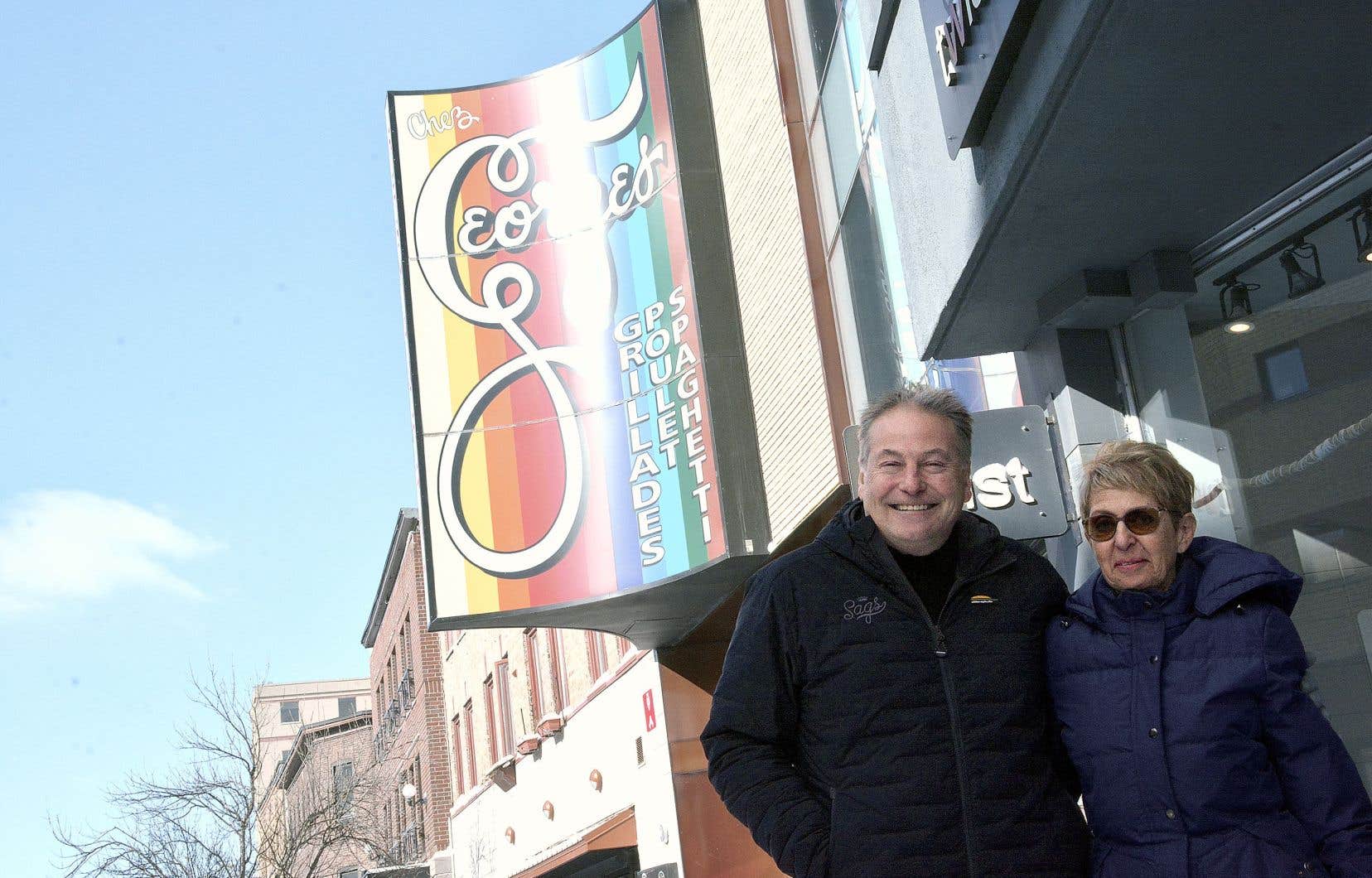Abraham, Gimaïel, Khalil… These family names with their Middle Eastern sound truly belong to the history of the families of Saguenay–Lac-Saint-Jean. The duty traced the history of these early immigrants, some of whom share a kinship with a Lebanese president.
The rainbow sign “Chez Georges” has colored downtown Chicoutimi for a long time. The restaurant opened in 1960 is very well known in the region and beyond. Lesser known fact, The Saguenay institution owes its sustainability to the Lebanese of origin Georges Abraham.
“He had the blood of a businessman,” says his daughter Norma, accompanied by Jean-François, from the third generation of Abrahams from Saguenay. Their ancestor, who arrived in Quebec at the age of 12, left his mark on several regions before leaving his mark in Saguenay. An itinerant trader, at the beginning of the last century he distributed food from Montreal “to all the quays of the Saint-Laurent”. He also opened clothing stores in Sept-Îles and Matane before choosing Chicoutimi to open the first one. steak house of the region.
“An uncle told him: ‘You have to come here, there is money to be made’,” recalls Jean-François Abraham, who today runs the family business. Commerce has long been at the center of downtown nightlife. “There have been seven expansions [dans l’histoire du restaurant]. […] It was always full. »
Today, modernity has replaced the original decor and there is only “Lebanese soup” on the menu to recall the origins of Georges Abraham. His name, however, sits in the name of the region’s most important golf tournament and his legacy can be found in the numerous investments made during his lifetime.
From south to north
By scratching a little, we discover the unsuspected heritage of the Lebanese in the four corners of Saguenay–Lac-Saint-Jean. The Gimaïel family has run a business in Métabetchouan–Lac-à-la-Croix for 110 years.
“Our parents fled Turkish domination and massacres,” remembers Jean-Pierre Gimaïel. His father, Paul Gimaïel, arrived in Canada around 1910 first as a peddler, a “ peddler » like Mr. Araham, selling his merchandise from house to house. The beginnings were far from easy without mastering French, recalls his sister Cécile Hudon, née Gimaïel.
“Once, he was told that there was a street in a village “without” a house. He had understood a street of “a hundred” houses… He learned by sound. » When he succeeded in opening a store on the edge of the lake in 1914, “it was a success. He finally dropped the suitcase.”
More than a century later, the Gimaïel family is well rooted and its business is still well established. Century-old vines still grow in the backyard of the family home. Leaves are picked to make rice cigars. Cécile still speaks Arabic, but not often.
The integration of his Lebanese family in Lac-Saint-Jean went very well, summarizes the other brother, Pierre Gimaïel. “We were being called Syrians. We had to defend ourselves, and that was the end of it. » Not only was he himself elected a federal deputy, but his brother Jean-Paul worked in the upper echelons of Quebec hockey and hosted several wrestling galas. One of their nephews is now a judge. This is perhaps not just a coincidence, since this branch of the Gimaïel has a family link with that of the Gemayel still present in Lebanon, whose brothers Bashir and Amine led the country during the 1980s. The two sections of this illustrious family have met a few times over the years.
Sellers
Nancy Khalil is probably the oldest Lebanese woman in the region. Arriving at the age of 20, she estimates that just under 100 families of Middle Eastern origin populated the region before the 1970s. Most were Christians, but “a few” were Muslims. “Everyone was welcome. »
Families like hers did not work in the forests or on large dam sites like other Quebecers, she remembers. The new arrivals mainly took care of the surrounding businesses. They all certainly had “the entrepreneurial spirit”. She herself was a self-employed cook.
Among her memories, she remembers the Italian boat that moved her from Lebanon to Canada. The crew had fed her spaghetti throughout the stormy crossing. She couldn’t eat it again for years. That didn’t stop her from feeding the Saguenéens for decades.
This report is supported by the Local Journalism Initiative, funded by the Government of Canada.
